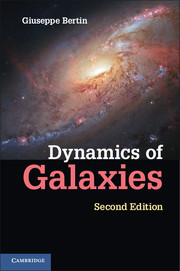Book contents
- Frontmatter
- Contents
- Preface to the Second Edition
- Preface to the First Edition, 2000
- Acknowledgments
- PART I Basic Phenomenology
- PART II Physical Models
- PART III Spiral Galaxies
- PART IV Elliptical Galaxies
- PART V In Perspective
- 25 Selected Aspects of Formation and Evolution
- 26 Galaxies and Gravitational Lensing
- 27 Self-Gravitating Accretion Disks
- Bibliography
- Index of objects
- Index
27 - Self-Gravitating Accretion Disks
from PART V - In Perspective
Published online by Cambridge University Press: 05 June 2014
- Frontmatter
- Contents
- Preface to the Second Edition
- Preface to the First Edition, 2000
- Acknowledgments
- PART I Basic Phenomenology
- PART II Physical Models
- PART III Spiral Galaxies
- PART IV Elliptical Galaxies
- PART V In Perspective
- 25 Selected Aspects of Formation and Evolution
- 26 Galaxies and Gravitational Lensing
- 27 Self-Gravitating Accretion Disks
- Bibliography
- Index of objects
- Index
Summary
This final chapter is meant to be a bridge between the dynamics of disk galaxies and the dynamics of disks on much smaller scales. The paradigm of mass accretion on a central object by means of a dissipative disk has long been studied in various contexts. The general framework was initially considered as a tool to describe the formation stages of the solar nebula to clarify the mechanisms that generate stars and planets. Later, the picture was reexplored in the context of high-energy astrophysics. There are thus two interesting aspects: the formation and dynamical evolution of a disk during collapse and the possibility of extracting gravitational energy from systems dominated by rotation. In the general picture, key roles are played by viscous dissipation and angular-momentum transport.
These concepts bring us to consider some of the topics that are currently at the frontier of astrophysical investigations. At the smallest scale, for masses of the order of a few solar masses and lengths of the order of a few astronomical units, much of the current interest addresses the processes of star and planet formation; here great progress comes from the ongoing discovery and study of extrasolar planets and detailed observations of star-forming regions with dedicated telescopes from the ground and from space. At similarly small scales, high-energy astrophysics phenomena are produced when accretion occurs onto compact stellar objects and stellar-mass black holes; these processes generally affect binary systems, in which material from a relatively normal star is captured by the compact star.
- Type
- Chapter
- Information
- Dynamics of Galaxies , pp. 435 - 450Publisher: Cambridge University PressPrint publication year: 2014

